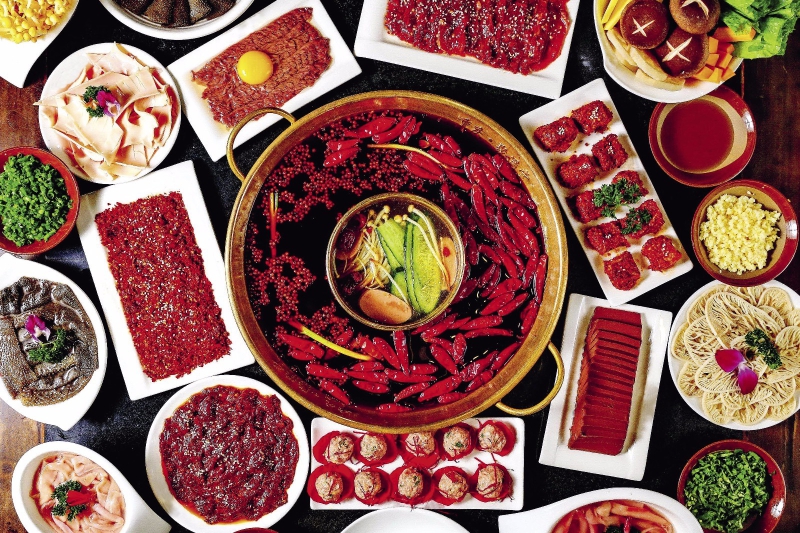
Chili, another spice commonly used in cooking, after being introduced from South America, took root in China and gradually replaced indigenous spices as the most widely found seasoning. In the Dalou Mountains in southwest China’s Guizhou Province, people of the Tujia ethnic group know how to cultivate the best red cluster pepper, arguably the hottest in China. Scientists say that water of 500,000 times more is needed to thoroughly dilute the pungent taste of the chili.
An encounter of Sichuan pepper and chili pepper is not only a collision between tastes and gustatory nerves, but also a union of ingredients from Asia and America. The two wonderful spices eventually met in a city – Chongqing, where a numbingly spicy adventure started.
The origin of Chongqing hot pot can be traced back to the late Ming (1368-1644) and early Qing (1644-1911) dynasties. It was a popular dining style at that time among port workers at the Chaotianmen Port on the Jialing River, a tributary of the Yangtze River. The hot pot, with its distinctive flavor, has gradually become the favorite cuisine of local people. Chongqing hot pot can be categorized into three types, soup pot, spicy hot pot, and double-flavor hot pot. The soup base is famous for a variety of raw materials and uniquely spicy taste.
Beef tallow, which reduces the taste of chili and Sichuan pepper, is a secret condiment for Chongqing hot pot. Bean sauce and fermented beans thicken the soup, and minced ginger diversifies the pungency. More importantly are the skills of the chef, who keeps stir-frying the raw materials when making the soup base, making the aromatic and spicy substances ooze into the oil and give off a distinct fragrance.
Besides the secret embodied in the soup base, the tantalizing taste of hot pot is also attributed to local people’s magical treatment of ingredients, which seem to include all edible things from poultry to seafood, mushrooms, pork, mutton, beef, and various types of vegetables. The dipping sauces are made of sesame oil, oyster sauce, vegetable cooking oil, mashed garlic, and egg whites. Diners usually boil the ingredients in the soup base and then dip them into the sauces which not only give them different flavors, but also help diners produce saliva and reduce heat from the spice.
Inside a restaurant serving the Chongqing traditional hot pot, specially-made seats are laid around dark-colored dining tables on which the copper pots are being heated with a charcoal fire beneath. Diners fix their eyes on the boiling pot, ready to take out the food at the right timing. Even a sweltering summer cannot deter passionate foodies, an accurate representation of Chongqing locals’ character and their unique dining culture.
Hot pot is the best way to represent the Chinese people’s longing for reunions with family and friends. While hot pot suits a get-together of friends, eating Chongqing spicy hot pot is something like making a friend. The longer it boils, the more savory the food becomes.
The broth of the hot pot must be boiled for an hour before the seasonings in the hot pot can be mixed thoroughly and completely release the aromas. Therefore, a diner may go to a restaurant two hours in advance and place the hot pot with solid seasonings above the fire to boil. Just imagine that all the condiments, fermented soy beans, scallions, ginger slices, garlic cloves, cardamoms, Sichuan pepper, and chili pepper blend and have their flavors dissolve in the broth. There are few better ways to spend time with loved ones than enjoying a feast of hot pot.